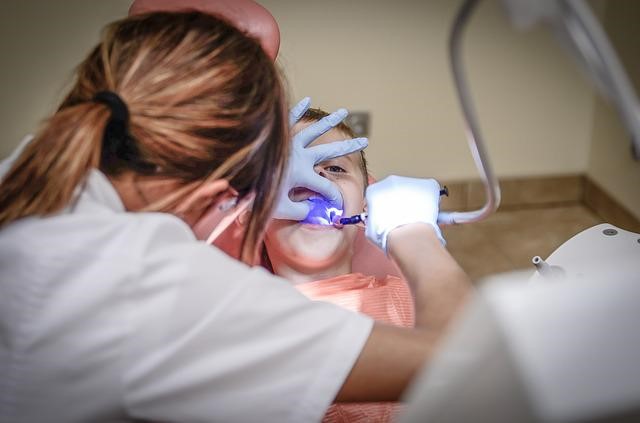
Caring for an infant entails an elaborate list of must-do things. If you are new to parenthood, the role of a feeding bottles and knowing the right time to replace them with new ones may be completely alien to you. Allow this guide to shed light on one of the most ignored topics about caring for babies.
Unforgettable General Rules
Generally speaking, you can replace your baby’s feeding bottle every three to four months and replace it with a doctor recommended baby bottle. However, this is not a strict rule and is subject to change. For instance, you might feel the need to replace the feeding bottle sooner or later depending on its condition and the development of your baby. Some of the telltale signs that you must be on the lookout for are outlined below.
Discoloration
Discoloration from clear to yellow is an obvious sign that your baby’s bottle tip needs replacing. A distorted top shape or reduced output are some other points to consider. The discoloration is also a warning sign since it hints at deteriorating protections, which could possibly lead to ingested chemicals, microplastics, or BPA.
Liquid Pouring Out at Varied Pace
Did you know that different babies need different sizes of bottle tip? A newborn cannot use the same bottle as one used by a six month old. If the liquid is pouring out too quickly or too slowly for them to eat enough, this is a sign that you are using the wrong size of bottle tip and may need to invest in a more suitable size.
Mildew Spots
The presence of mildew or mold spots on your baby’s bottle tips warrants an immediate replacement of the feeding bottle with a doctor recommended baby bottle. Mildew is a serious threat to your baby’s wellbeing and can land them in the hospital if not taken seriously.
Broken Pieces
Broken pieces are an obvious sign, indicating immediate replacement. The bottle might technically be functional, but broken bits falling off could pose as choking hazards.
Thinning or Warping
Thinning and warping may not seem like a big deal; however, they do indicate the deteriorating condition of the tip of the bottle. Commonly seen in cheap plastic bottles, thinning and warping warrants investing in high-quality, doctor recommended baby bottles, allowing one to retain the bottle tips for longer and avoid health risks.
Overall, it is a good idea to consider a new bottle tip for your baby after three to four months; however, there are many indicators that prove helpful in deciding the right time to make a switch. From discoloration to thinning, your baby’s bottle tips need your undivided attention. With every replacement, you make ensure that you invest in doctor recommended baby bottles that will not deteriorate too quickly.

Pediatric dentists are specialists who treat children from infancy through the teenage years. They deal with tooth decay, gum disease, and other problems affecting children’s teeth. It is important to start taking your child to the Pediatric Dentist as early as possible because prevention is always better than cure.
What You Can Expect During Your Child’s First Visit to the Pediatric Dentist?
The most important thing is that your child should feel comfortable and at ease. The environment should be calm, welcoming, and fun. The staff should be friendly and make your child feel special.
• On your first visit dentist will:
• Examine your child’s teeth and gums
• Check for tooth decay
• Evaluate your child’s risk for cavities
• Recommend fluoride treatments, if needed
• Apply sealants to teeth, if needed
The first visit is also a good opportunity for you to ask any questions you may have about your child’s oral health.
How to Prepare Your Child for the Visit?
The best way to prepare your child is to talk to them about the visit in a positive way. Explain that the dentist is there to help keep their teeth healthy. Let them know that they will be able to ask the dentist any questions they may have. Here are some other tips:
1. Prepare Your Child Ahead of Time
If your child is old enough, it can be helpful to read a book about going to the dentist together. This can help them understand what to expect. You can also show them pictures of the dental office and staff ahead of time.
2. Choose the Right Time for the Appointment
Try to schedule the appointment at a time when your child is well-rested and not hungry. This will help them be in a good mood and cooperate during the visit.
3. Stay Calm and Positive
Your child will likely mirror your own emotions. If you are anxious or nervous, they will pick up on that. Instead, try to stay calm and positive. This will help put them at ease.
4. Don’t Promise That It Won’t Hurt
Some children may be worried about getting shots or having their teeth cleaned. instead of promising that it won’t hurt, let them know that the dentist will do everything possible to make them comfortable. This way, they won’t be as worried or upset if there is some discomfort.
5. Reward Them After the Appointment
After the appointment, be sure to praise your child for being brave and doing a good job. You can also give them a small reward, such as a sticker or their favorite treat. This will help them associate going to the dentist with something positive.
Preparing as a Parent
In addition to preparing your child, there are also some things you can do as a parent to make the appointment go smoothly.
1. Fill Out Paperwork Ahead of Time
If possible, fill out any paperwork ahead of time. This will save time on the day of the appointment.
2. Arrive Early
Plan to arrive 10-15 minutes early for the appointment. This will give you time to fill out any paperwork and get your child settled in.
3. Be Prepared to Answer Questions
The dentist will likely have questions about your child’s medical history and oral hygiene habits. It is important, to be honest, and open to ensure that your child gets the best possible care.
4. Be Involved in the Appointment
Be sure to ask questions and be involved in the appointment. This will help you better understand your child’s oral health and what you can do to help them maintain good oral hygiene.
5. Follow Up After the Appointment
After the appointment, be sure to follow the dentist’s recommendations. This may include scheduling a future appointment or starting a new oral hygiene routine. Doing so will help ensure that your child’s teeth remain healthy.
Preparing your child for their first visit to the Dentist can seem daunting, but it’s important to start early. By following these tips, you can help visit go smoothly and ensure that your child gets the best possible care. Also, be sure to follow up after the appointment and schedule future visits as recommended.

Playing dress up is a hallmark of childhood, and what is more special than when your daughter dresses up like her favorite superhero – mom! It’s hard to be upset when she ruffles through your closet and makeup, emerging with the long arms of your favorite sweater dangling and your favorite necklace as her chosen accessory! Show her the next level of “dress up” by surprising her with matching outfits. Mommy and me outfits are a great way to bond while having fun. Let’s look at five styles.
The wild side
Mommy and me outfits that feature leopard or animal print are perfect for the fierce little girl – and mom – that doesn’t let anything stand in her way. If you are animal lovers this could be a great, fashionable option! Animal print reflects a grounded yet incredibly confident nature.
Laid back retro
The “good old days?” Every day can be a good day! Think tie dye prints for mommy and me outfits when you and your daughter love lying in the hammock, listening to the birds, walking barefoot on the lawn, and taking soup over to the neighbors. Tie dye says “relaxed, nature-forward, caring.”
Boho beauties
Like tie dye, boho is a style that speaks to being grounded and natural, but has a quirkier, fun edge. In the early 2000s, icons Sienna Miller, Kate Moss and the Olsen twins brought boho-chic to the forefront. Emulate this style with your daughter. Boho mommy and me outfits feature flattering, flowing styles; floral patters; and are incredibly comfortable.
Formal
Attend weddings, graduations, Christmas parties and other events with matching formal mommy and me outfits. Gone are the days when formalwear meant tight and uncomfortable. Instead, mommy and me outfits that are suitable for elevated occasions can be loose and flowing, using expert tailoring and draping fabrics to create flattering silhouettes without ever sacrificing comfort.
Casual camo
You don’t have to be sitting in a deer blind to appreciate a good camo print! Casual camo is showing up in ladies and girls’ styles because it’s a fun print. When used on a dress, it shows that the wearer is strong and capable without the need to resort to menswear to get her point across. Mommy and me outfits featuring camo prints are a great way to show off a confident style.
You found the perfect mommy and me outfit. Now what?
Once you have the mommy and me outfit that suits both of your personalities, why not plan a special day for just the two of you? Depending on what you like to do, consider wearing your outfits:
• Out for a mom and me brunch
• Head down to the local petting zoo
• Spa day! Some nail salons have specific tween or youth-appropriate manicures
• Get your hair done then have a professional photoshoot
Where to get mommy and me outfits?
Browsing online or on mega-shopping e-commerce sites will bring up plenty of mommy and me outfits but do be careful. Look for a place that curates exclusive prints and focuses on easy-wear dresses that are still incredibly stylish and comfortable. Also ensure that the store focuses on appropriate wear and steers away from the “costume” aspect that can be prevalent in matching outfits. The goal is mommy and me outfits that are timeless, can be worn for many different occasions, that add mileage to the wardrobe, and are high quality.
Giving back
Look for more than just the outfits when choosing mommy and me dresses. In this day and age of consumerism and commercialism, let alone mass-produced goods from factories where the workers may not enjoy safe conditions, “voting with your dollars” is more important than ever. Your purchases can reflect your commitment to social good; so, also look for a company that gives back to community, is local and is ethical.
Mommy and me outfits – special moments to treasure
When you find the mommy and me outfits that match you and your daughter’s personality, and you purchase those outfits from a local, ethical designer focused on giving back, the impact is felt for you, your family, your community, and beyond.

A pediatrician is a doctor for children. Their chosen specialty is pediatrics. They usually see children from infancy to 18 years of age. They obtain special training for medically treating children of all age groups.
If you are about to become a new parent; you may wonder if you need a pediatrician or your family doctor can medically take care of your child. Such concerns are valid.
Family doctors are not trained to treat children. Yes, they can but treating children is not their specialty. If you are yet to find a pediatrician, use online searches to select one after due discretion. Utilize keywords such as pediatrician in Jacksonville FL (requirement and your location) to find good leads.
Pediatricians: Training and Role
Qualifications, specialization, and credentials –
Pediatricians finish four years of medical school after obtaining their under-graduation degree. Their undergrad degree is pre-med, consisting of subjects such as chemistry and biology.
They complete their 3-year residency program after graduating from medical school.
They will work under experts and obtain the necessary knowledge and skills to medically treat children. Some pediatricians further specialize as cardiologists, neurologists, oncologists, psychiatrists, or other specialists during their fellowships. They can choose any sub-specialty. Many pediatrics also choose to specialize in neonatal medicine and pediatric surgery. The fellowship training can take up to 2-6 years.
They also need to sit for their board certification exams after their residency is complete. The American Board of Pediatrics issues certifications to doctors who have completed their residencies and cleared a written exam and interview. They need recertifications every seven years.
So, when choosing a pediatrician, always check their credentials. It is best to have a board-certified pediatrician. You can find this information on the clinics’ websites. Using location-based keywords; such as pediatrician in Jacksonville FL can be very helpful to find qualified pediatricians near you.
Pediatricians work in private clinics (individual or groups practices), children’s hospitals, or general hospitals.
Choose a pediatrician with due care. Perform your research even when you find a name via a trusted referral. A doctor who is right for your friend or a family member may not be ideal for you.
Role –
A pediatrician has many responsibilities.
They treat children of all age groups; for all types of physical ailments. From common health scares to severe conditions; a pediatrician treats everything.
They also take care of wellness visits and vaccinations. Wellness visits (or well-child visits) help to track a child’s physical, mental, and emotional development. They will give vaccines to their patients and maintain records of the same.
Pediatricians also tend to emergencies such as burns, injuries, cuts, or any other health scare such as high fever, cold, insistent coughing, blood in urine or stool, objects lodged anywhere in the body, toxin ingestion, etc.
Pediatricians treat and help manage chronic medical conditions in children and teens. They also treat mental and psychological problems in their patients.
Pediatricians will recommend your child see a specialist if needed. They may make the referrals as they have a large professional circle. For instance, a teenager with depression or an eating disorder may require treatment from a specialist. If your pediatrician considers it important, he or she will recommend that you see one. They will refer specialists they consider right for the treatment.
Pediatricians also address parents’ questions. First-time parents, especially, may have tons of questions. The same applies to parents of children suffering from chronic or specific medical conditions.
Pediatricians also address their patients’ queries. This is especially true for pre-adolescents and adolescents. Your teenager may have questions, which he or she may not feel comfortable discussing with you. In such cases; access to a trusted pediatrician can be very helpful.
When you first visit the pediatrician soon after your child’s birth; you will receive the list of recommended visits for wellness checkups and vaccinations. As your child gets older, wellness pediatric visits will reduce in frequency. Of course, you should always call your pediatrician in case of emergencies.
If you choose a group practice, there will always be a doctor available to handle your child’s treatment in case your pediatrician is away for some reason. This can especially be a boon during medical emergencies.

We all want our families to be healthy, and we understand the importance of food in achieving that goal. Healthy food, packed with nutrition, is required for the physical growth and mental development of every individual.
Also, it provides us with the energy to carry out our daily functions. However, most of us do not have access to the basic necessity-called food. Hence, we can’t have a prosperous life without eradication the global issue of world hunger.
People in impoverished societies suffer from hunger and malnutrition. Children in their growing years do not receive proper care and continue to battle this issue throughout their life. Hunger problems result in less productive individuals with weak immunity.
People in these areas often fall prey to physical and mental diseases. They are unable to earn more and have a stable livelihood.
Now you must be thinking- How do these issues impact the world at large and why is it important to solve the hunger problem?
Why?
The world is one big family, and despite being separated by miles, we are still co-dependent on each other. Hunger is a constant obstacle in the path of sustainable development. Solving the hunger problem will increase the productivity of individuals, and they can contribute to economic development.
The developing countries are most impacted by the hunger problem. Despite the best hunger charity organizations, about 800 million people suffer from hunger worldwide, and it is heartbreaking to see the numbers increase each year.
But can we do something about the global hunger issue? Let us learn how we can solve the hunger problem.
How?
The earth produces enough food to feed the entire human population of 7.9 million people. However, more than ten percent of us are dealing with scarcity of food and nutrition.
Let us look at a few ways we can put this global issue to an end, and aim for sustainable development.
1. Food donation
While self-sufficiency is the ultimate goal for stopping world hunger, food donation is a great step till we reach there. A small can of food may not seem a big deal but can feed a person in need.
You can start looking for the best hunger charity in the nearby areas and contribute as much as you can. You can also make cash donations, which can be used to supply the poverty-stricken areas.
2. Urban farming
Food production has many obstacles, like prolonged periods of extreme temperature, natural calamities, and scarcity of agricultural land. Having a rooftop or indoor farm frees the food production from constraints of land and weather.
Contrary to the popular belief, a large percentage of malnourished people live in urban settings. Urban farming allows them to take charge of their food production. When the consumers themselves become producers, the hunger problems can be solved quickly.
3. Government support
The government support and intervention are more effective due to its organized structure. To combat global hunger foreign nations should be encouraged to provide aid through government support.
Also, a collaborative effort with the best hunger charity organizations can accelerate the food supply and help the people who need it the most.
4. Education on family planning
The population is a significant concern for the world as a whole. As the population increase, we fight for limited resources like food. For some nations, the situation is far worse than others.
Inadequate knowledge of family planning and birth control are the primary causes of such an issue. Hence, one of the ways to eradicate global hunger and malnutrition is to create awareness about family planning and provide access to contraceptives.
The hunger problem is a significant concern that should be considered with utmost sincerity. Here are a few ways that can help us put an end to the global hunger problem.













